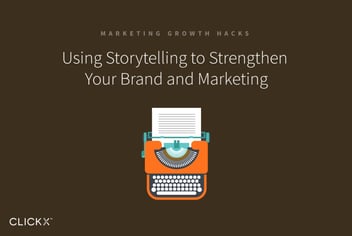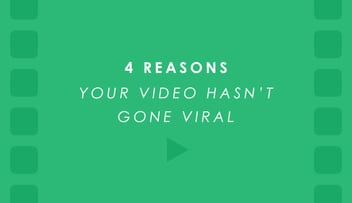Why You Should Use Emojis for Your Business
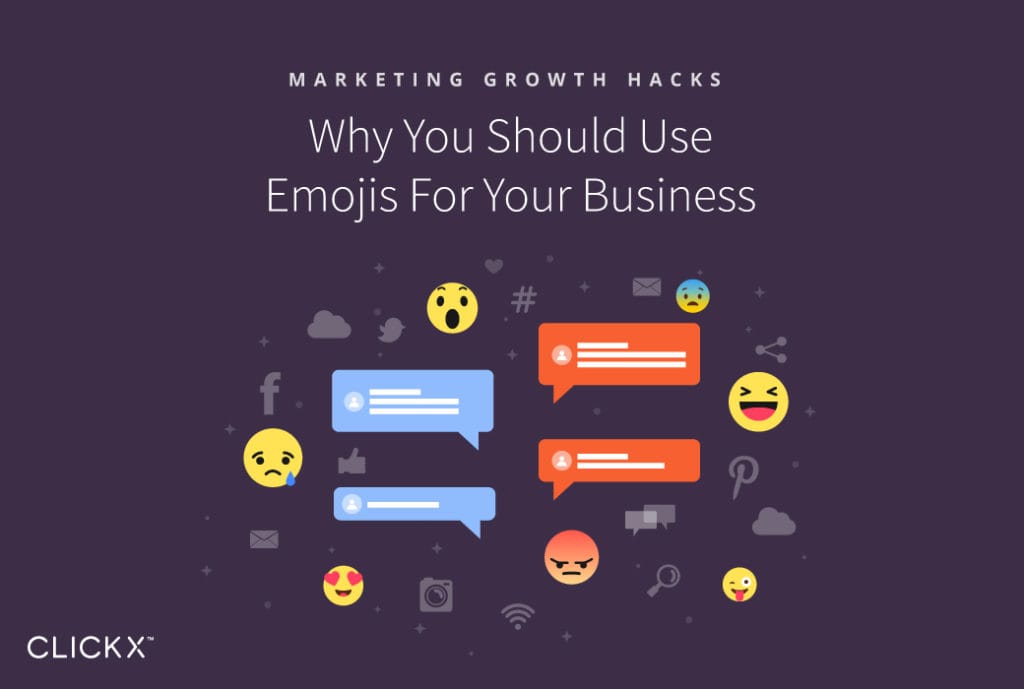
According to Applause, more than 6 billion emojisare sent between mobile users around the world every day. You can say emojis are a popular sensation today. When you hear the word “emoji” or “emoticon” you’ll probably think of millennials obsessively using them in text messages or on social media. Since emojis have recently become more popular in our culture, more and more people have begun to creatively use them to communicate a message or represent an idea. In fact, even Baby Boomers and Generation X have started to use emojis, perhaps to keep up with the trends of younger generations.
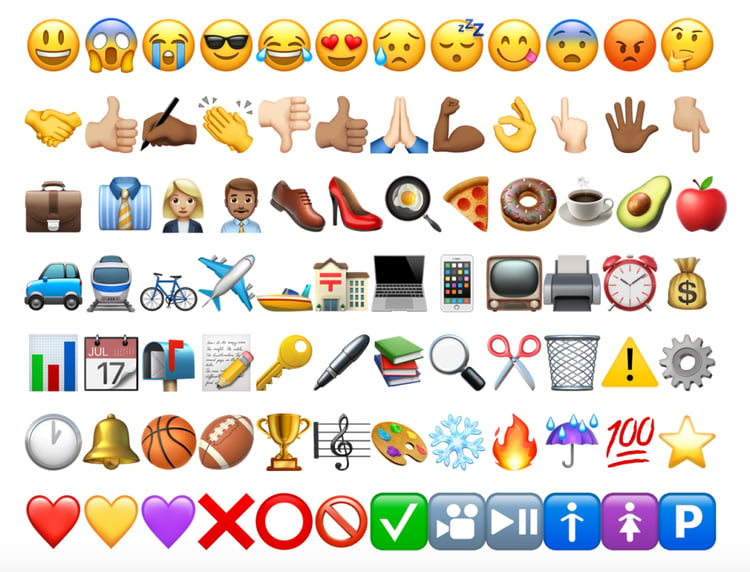
As more people use emojis, so are businesses. You’ve probably seen emojis in text messages but now they’re transitioning into marketing tactics such as emails, social media, blogs, and ads, as businesses attempt to creatively integrate them. From a study by Appboy, they found that in the last year, there has been a 777% increase in the use of emojis for branded campaigns. That’s a mind-boggling number. Businesses have started to use emojis to communicate a message, respond to consumers, and market a product through emoji communication. In the digital world we live in today, what are the best ways to capitalize on emojis for your business?
What Is An Emoji?
Before we dig deeper into valuable emoji business strategies, what even is an emoji? Emojis are almost treated as their own language. They’re essentially a language of symbols or images that represent an emotion, idea, expression, and concept to make digital communication easier and feel more realistic for humans. Even though their meanings may be interpreted differently across cultures, emojis help support a language and can simplify complex linguistic hurdles.
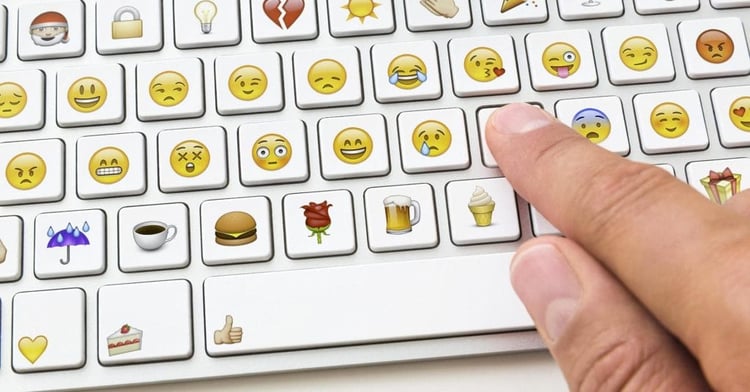
Can They Be Used In Marketing?
If emojis are a language of symbols, can they really be incorporated into marketing strategies today? Yes, there are numerous ways to add emojis into your brand’s strategy and will definitely help your brand be very distinctive, grow your brand, connect better with your audience to name a few. As shown on social media, it’s difficult to avoid and not take advantage of the heightened popularity of emojis. In fact, emojis could even be used as frequent as the use of hashtags, so their use will be essential in the near future. So if you’re a marketer looking for a great opportunity, what are effective ways to use emojis in marketing?
To Increase Brand Awareness
Just like any brand, brand awareness may decide the success or failure of a business. An easy way to increase awareness is by announcing products or services. Well, what if the announcement was filled with emojis? Emojis are trendy and consumers love jumping onto trends. Furthermore, consumers also love hype and buildup. Your product or service will be more noticeable and attractive with emojis. Chevrolet is a great example of using emojis to increase brand awareness. To promote their 2016 Chevrolet Cruze car, they revealed the car through an emoji press release and used the hashtag #ChevyGoesEmoji. They may have gone too far by overusing emojis but that’s not really the point here. The point is, they were able to generate a lot of buzz because they creatively communicated a message with emojis.
To Increase User Engagement
Emojis are very effective at increasing user engagement because they influence consumers more on an emotional level, rather than an informational level. It’s a great way to humanize your marketing and show your audience your brand’s personality. You’ll quickly outshine your competition. Emojis also convey more information using lesser words, making the message more appealing to consumers. Email subjects lines are perfect examples of using emotions with less words:

Push notifications, announcements, and social media posts are more great emoji tactics to employ. If you examined your latest social media posts, is your audience even engaged? How is your audience responding? If you were to create a tweet integrated with emojis and another tweet with no emojis, you’ll most likely find that users are more engaged into the tweet that contains emojis. Every brand should compare their marketing data to see where it’s appropriate to incorporate emojis. To start increasing your brand’s user engagement, respond to consumers on social media, draw attention with a call to action, use emotional triggers, and be consistent.
To Increases Metrics
Today, your brand probably studies your marketing data and will measure its effectiveness to consider making adjustments or not. Have you ever considered studying the effectiveness of your marketing data with emojis vs. without? How do emojis impact brand metrics? The company Snaps found out that consumers who observe a marketing campaign that have emojis, from a consumer goods brand, were 3x more likely to purchase the product than people who didn’t see any emojis. This shows that it’ll be vital to compare your contextual data vs. imagery (emoji) data with the same techniques that are already used to measure your marketing. Asking consumers to like, share, or comment, on your social media posts is boring. Instead, asking consumers to like, share, or comment by using emojis will give consumers more reasons to interact and will get more excited about your brand. Facebook was one of the first social media channels to successfully incorporate emojis for every public post. According to Zazzle, Facebook posts with emojis saw a 57% higher like rate, 33% higher comment rate, and a 33% higher share rate. As a result, using emojis will increase your metrics. They demonstrate that they can be a great opportunity to create additional data and implementing the new data in future marketing campaigns can be very beneficial for your brand.
Emoji Marketing Examples
As emoji’s popularity increase, what are good examples of brand’s capitalizing on them for their marketing?
Burger King Emoji Keyboard
Burger King recently brought back their popular chicken fries back into market and wanted to spark awareness. To increase sales and the attention of the brand, Burger King successfully used emojis to launch a campaign for their popular chicken fries. They created a very unique emoji keyboard that was targeted towards their younger audience and implemented them throughout their social media channels. As a result, Burger King saw their third quarter U.S. and Canada same-stores sales rise by 3.6%.
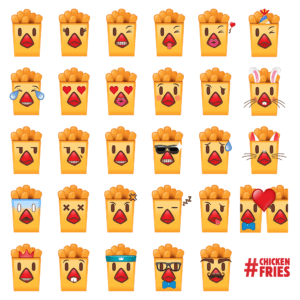
Deadpool Movie Billboard
Another emoji example was when the movie, Deadpool, was just coming into theaters. To promote the movie, they used emojis to send a simple message to consumers. The eye-catching billboard had a “skull” emoji, “poop” emoji, and the letter “L” to spell out the word, “Deadpool”.
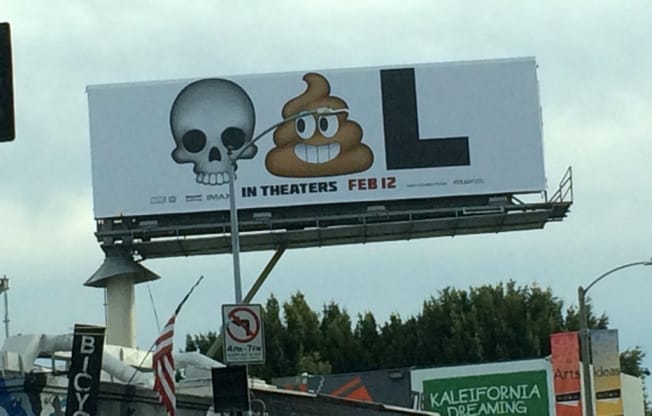
Domino’s Tweet A Pizza
Dominos is another popular brand that used emojis in their marketing. In 2015, they used Twitter as a way for customers to order pizza. All customers had to do was tweet a pizza emoji with their order and Dominos would deliver it to your house. This simple yet impactful idea, shows that emojis can make a huge impact for a brand’s online presence.
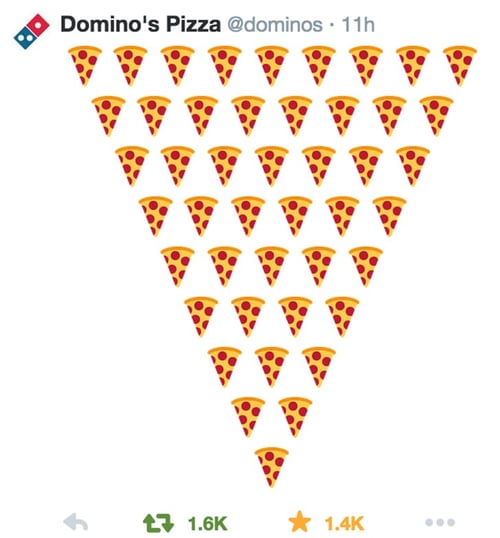
Get Started
As mentioned above, it’s time to get started implementing emojis in your marketing strategies. If done right, emojis can increase sales, awareness, humanize your marketing and show your audience your brand’s personality. Your brand will grow faster than anticipated. It doesn’t hurt to try out emoji strategies because they aren’t leaving anytime soon!


